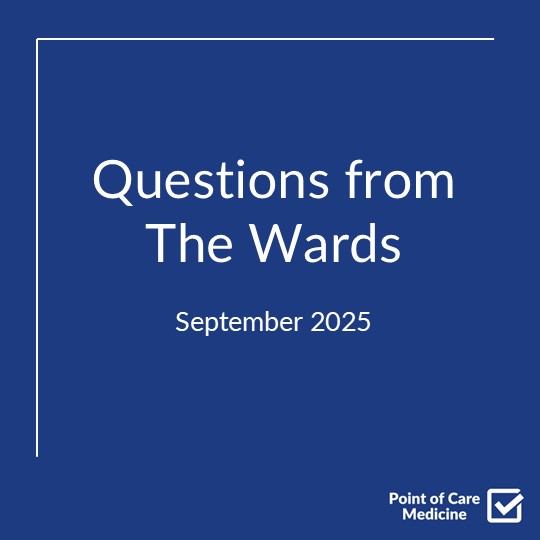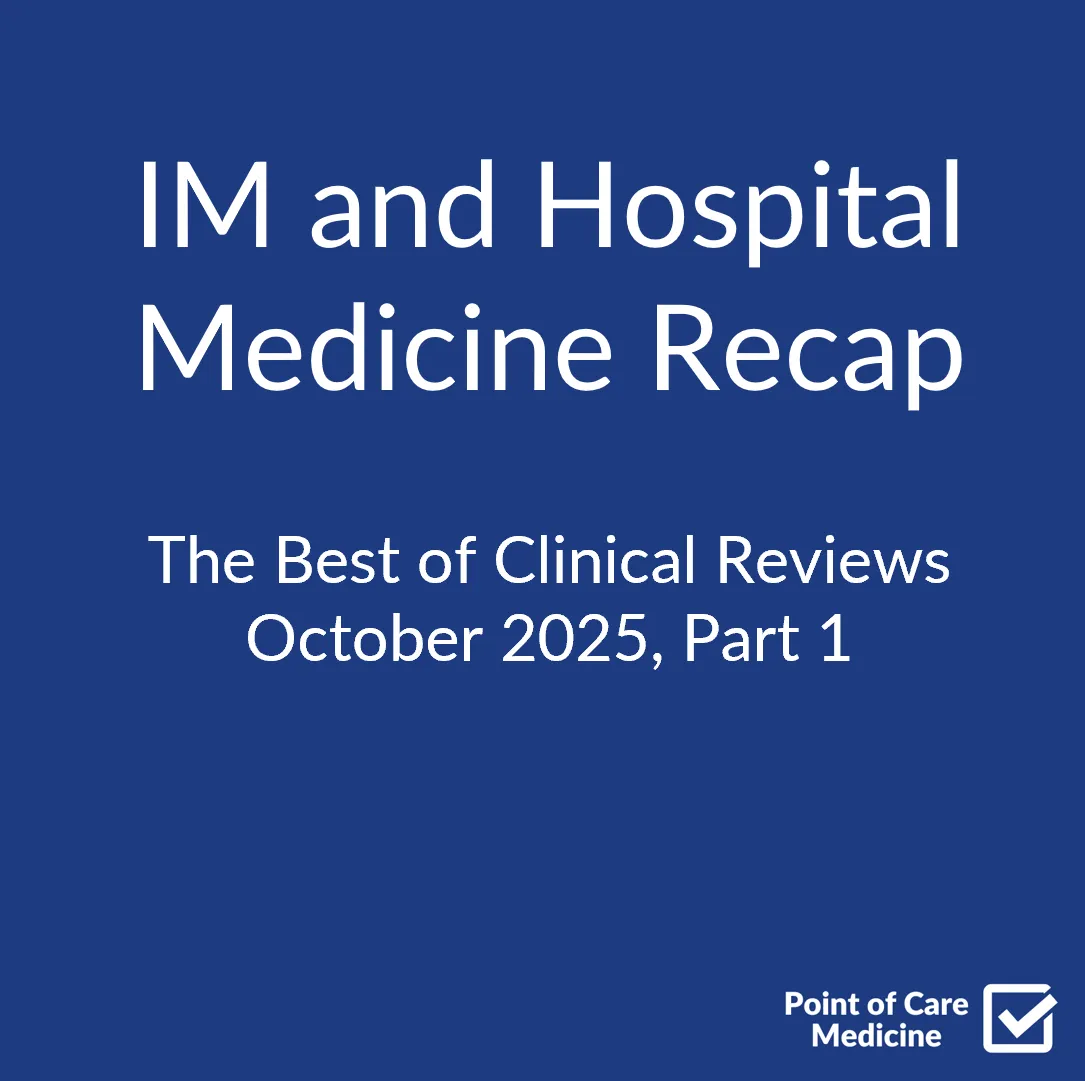Audio
Video
Introduction
After each month working in the hospital, I try to do a deep dive into a few topics / questions that came up. Here are a few of my recent favorites!
Reactive leukocytosis, post-herpetic neuralgia, post-ERCP rectal indomethacin, suboxone causing tooth decay, and methotrexate-induced kidney injury.
Subscribe to the Substack to get these posts directly in your inbox!
What really is “reactive leukocytosis?”
I’m guilty of explaining away any elevated white count that I don’t think is caused by an infection as “reactive.” But what does that even mean, and how can you confirm this?
First, understand that the stress response from catecholamines and glucocorticoids causes neutrophils stuck along the endothelium to re-enter circulation (or “demarginate”), often within hours of the stressor. This is really what we mean by “reactive.”
Thus, acute pain, surgery, seizures, MI, anxiety, β-agonists, and corticosteroid use can bump the white count quickly. In true “reactive” physiology, you will see neutrophilia (a high absolute neutrophil count, or ANC) WITHOUT bandemia. In other words the new circulating leukocytes are NOT immature cells coming from the bone marrow.
On the other hand, infections, inflammation, and G-CSF leads to accelerated release of immature cells (or bands) from marrow storage pools. Think bacterial infections, CDiff, pancreatitis, extensive tissue necrosis. Elevated bands are often referred to as a “left shift”. You may also see metamyelocytes and toxic granulations.
One oncologist I worked with described bandemia as the body calling in the “interns” to help fight the infection.
They are called band cells because the nuclei of immature white blood cells are not segmented and have a band-like or rod-like shape.
It’s called a “left shift” because of two potential historical explanations:
- Manual counting machines used by hematologists and pathologist had the left-hand position used to count the immature cells
- Textbooks images classically showed immature cells on the left and more mature cells on the right.
In the hospital, use the above information to approach leukocytosis with discipline. This is why a differential is important - it helps you sort between the two major “phenotypes” above. Another hematologist I worked with said a CBC without a differential is essentially useless.
I just had a patient who received G-CSF after chemo who came in 4-5 days later seemingly septic and with a WBC in the 50’s. There was profound bandemia (24%), but also toxic granulations noted on the smear. They ended up having GNR bacteremia. The bandemia was likely a combination of infection and G-CSF, but the toxic granulations were a tip off to infection.
If an elevated WBC is new, start with “why today?” Is there a new stressor, procedure, aspiration event, bleeding, ischemia, seizure, or drug (glucocorticoids, β-agonists, lithium, epinephrine, G-CSF) that might explain it?
Here are some other high-yield leukocytosis pearls:
- TREND the white blood cell count and the absolute neutrophil (ANC) count rather than fixating on a single value.
- In post-operative patients, remember that fever and leukocytosis alone are poor tests for infection in the first 48 hours
- In steroid-treated patients, expect neutrophilia with relative lymphopenia and eosinopenia
- The presence of eosinophils in the blood is strong evidence against a bacterial infection
- Be aware of baseline post-splenectomy leukocytosis or smoker’s leukocytosis. Splenectomy (or auto-infarcted spleen seen in sickle cell disease) causes leukocytosis (and thrombocytosis) because the spleen normally removes aged and abnormal leukocytes and platelets from circulation, acting as a filter for the blood. After its removal, there is reduced destruction of these cells, leading to a higher number in circulation. Furthermore, when these patients develop an infection, their leukocytic response can be extremely brisk and exaggerated due to the loss of this splenic regulatory function.
How do you manage post-herpetic neuralgia?
I’ll preface this by saying I’ve only taken care of a handful of patients with this, and in most cases medications have had at best a modest effect. This condition flat out sucks - get vaccinated!
The disease is defined by dermatomal nerve pain that persists more than 90 days after herpes zoster onset. You need to confirm the pain is over the same area of the previous infection. You should NOT see motor deficits - if this is present, you should be thinking about something else.
Before managing, it helps to define the phenotype, but remember that it can be a mixed picture.
Neuropathic Predominant
- Constant, burning, sensory loss
- TCA is first line (I prefer nortriptyline over other TCAs)
- Start with 10mg qhs
- Increase 10-25mg towards a max of 50-150mg qhs
- Watch for urinary retention, constipation, orthostasis, grogginess
- Be cautious in elderly - more likely to have symptoms, but better than amitriptyline
- SNRI is second line - often start with duloxetine 30mg, then up to 60mg
Neuralgic Predominant
- Brief, shock-like, allodynia to light touch or cold
- First-line is gabapentin or pregabalin
- Can start with gabapentin 300 qhs and increase by 300mg daily, noting that there is likely no benefit of this drug above 600mg TID
- Pregabalin 75mg qhs - can increase by 75mg every week to 150mg BID max
- Dose reduce gabapentin/pregabalin 50% for eGFR 30-59 and 25% when <30
- There is a 6:1 dose when switching from gabapentin to pregabalin (ex: 1800mg to 300mg)
- TCAs can be added if either gabapentin or pregabalin is not effective
- Lidocaine patches can be useful over areas of allodynia
For either phenotype, start one agent and get it to a meaningful dose for 2–4 weeks before adding a second class. Avoid lateral switches at sub-optimal doses.
Opioids can be used for short course when above meds take effect; tramadol is overall not a great opioid, but the additional serotonergic effect may be valuable in this case
Capsaicin creams are another option if patients don’t mind the burning sensation.
All in all, the best treatment is prevention with vaccination.
Giving anti-viral for acute shingles can help shorten the course, but its unclear if it can help prevent post-herpetic neuralgia.
Why do we give rectal indomethacin after ERCP?
ERCP can lead to pancreatitis (PEP) due to papillary or ductal injury from cannulation, contrast, or trauma.
NSAIDs prevent the inflammatory cascade that leads to pancreatitis from propagating.
Smart people will tell you that the rectal route is rapid-acting with reliable bioavailability. The other (and more practical) reason is that it can be given immediately after the procedure is done - you don’t have to wait for the patient to wake up and take a pill.
Suppositories will peak within 30-90 minutes which is good timing to stave off the inflammatory response.
A Randomized Trial of Rectal Indomethacin to Prevent Post-ERCP Pancreatitis (NEJM, 2012)
A single 100mg rectal dose cut PEP from 16.9% to 9.2% (NNT ~13).
Some centers also do post-procedure LR to reduce PEP risk - if patient can handle the fluid, why not?
Does suboxone use increase the risk of tooth decay?
Yes, it does!
This came up when a patient was telling me he was suspicious of suboxone after he googled it and was reading about a lawsuit where it was making patient’s teeth fall out. This sounded suspicious to me, and while the lawsuits were probably overselling the risks, its actually very real!
However, the problem isn’t a direct effect of buprenorphine.
Sublingual films contain acidic components and sometimes sweeteners.
Acidic pH can promote enamel demineralization.
Also, buprenorphine has mild anti-cholinergic effects that can lead to less saliva production and thus less natural buffering and washing away of acids.
Many patients also have baseline poor oral health and infrequent dental care.
In all patients taking suboxone or other film formulations, recommend that they:
- Do not hold film in mouth longer than necessary
- Immediately sip water and swish gently before swallowing
- Wait 1 hour before brushing teeth to avoid brushing softened enamel
Why Does Methotrexate Cause Nephrotoxicity?
Acute Methotrexate-Induced Crystal Nephropathy (NEJM, 2015)
Renal failure is a rare but serious complication of methotrexate (MTX) treatment that can lead to delayed drug clearance (methotrexate is ~90% cleared by kidneys) and worsening systemic toxicity (marrow suppression, mucositis, nausea/vomiting, diarrhea, dermatitis).
Precipitation of MTX in the renal tubules (largely the proximal tubules where it is excreted), leads to a non-oliguric AKI that spares glomerular filtration but impacts excretory function. This is why creatinine will rise, but urine output will often remain intact.
There is increased risk of precipitation in acidic urine. Patients receiving high dose methotrexate (common in lymphoma regimens) are treated with bicarbonate to help make the urine alkalotic.
Leucovorin (of recent autism management fame) attempts to prevent toxicity from any remaining methotrexate after its been in the system wreaking havoc on cancer cells for 24 hours. Leucovorin competes with methotrexate to prevent further damage to healthy cells. This is called “leucovorin rescue.”
But if methotrexate levels stay high for too long, even aggressive leucovorin regimens can’t outcompete it, especially in the bone marrow and GI mucosa.
Glucarpidase (carboxypeptidase-G2) is an enzyme that rapidly concerts MTX into inactive metabolites. After it’s given, MTX levels should go down by 98% within 15 minutes. Sometimes, as I’ve unfortunately seen, it doesn’t work. In this case, you need to treat supportively and create conditions to most effectively help the remaining MTX clear, despite the renal insult.
Glucarpidase for treatment of high-dose methotrexate toxicity (ASH Abstract, 2025)
Avoid NSAIDs, PPIs and penicillins, as these can also lead to poor clearance of MTX.
Low albumin also increases the risk of delayed clearance, because it can promote third spacing (creating fluid collections like pleural effusions where methotrexate may hang around in), delaying clearance.







.png)
